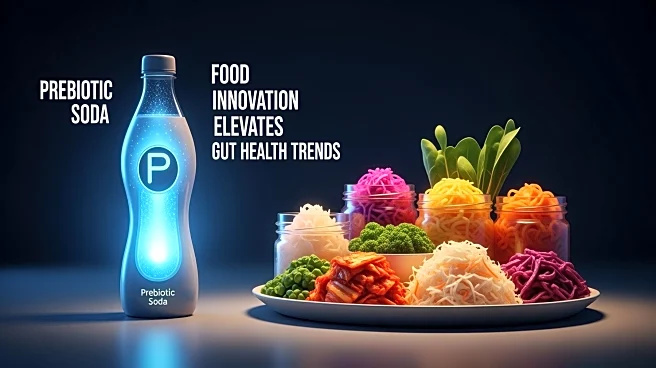What's Happening?
Recent discussions in the culinary and health communities have focused on the impact of high-heat cooking methods on health and longevity. The Maillard reaction, a chemical process that occurs when natural
sugars react with proteins at high, dry heat, is responsible for the rich flavors and aromas in foods like steak and roast chicken. However, this reaction also produces advanced glycation end products (AGEs), compounds linked to inflammation, tissue stiffness, and cellular dysfunction. Ed McCormick, a food science consultant, warns that consuming foods with high AGE levels can contribute to aging, heart disease, and memory decline. High-temperature cooking methods such as grilling and frying can increase AGE content significantly, while water-based methods like steaming and boiling can help preserve nutrients and reduce harmful compounds.
Why It's Important?
The findings underscore the potential health risks associated with popular cooking methods that enhance flavor and texture but may also contribute to chronic health issues. The accumulation of AGEs in the body is associated with serious conditions such as diabetes, cardiovascular disease, and neurodegenerative disorders. This information is crucial for consumers and health professionals as it highlights the need for dietary adjustments to mitigate these risks. By adopting lower-temperature cooking techniques and incorporating antioxidant-rich ingredients, individuals can potentially reduce their exposure to harmful compounds, promoting better long-term health outcomes.
What's Next?
As awareness of the health implications of high-heat cooking grows, there may be increased advocacy for dietary guidelines that emphasize safer cooking practices. Health professionals and culinary experts might collaborate to educate the public on the benefits of water-based cooking methods and the use of marinades to reduce AGE formation. Additionally, further research could explore the long-term health impacts of dietary AGEs and the effectiveness of various cooking techniques in minimizing these risks.
Beyond the Headlines
The discussion around AGEs and cooking methods also touches on broader themes of food science and public health. It raises questions about the balance between culinary tradition and modern health knowledge, as well as the role of food preparation in disease prevention. This could lead to a cultural shift in cooking practices, with more emphasis on health-conscious methods that still preserve flavor and enjoyment.











